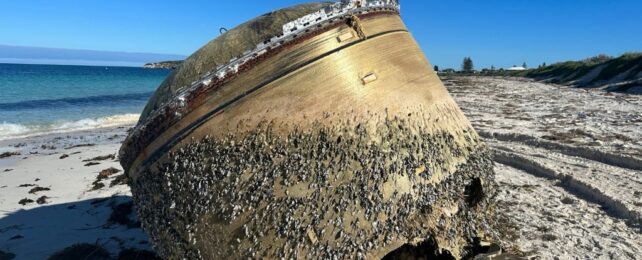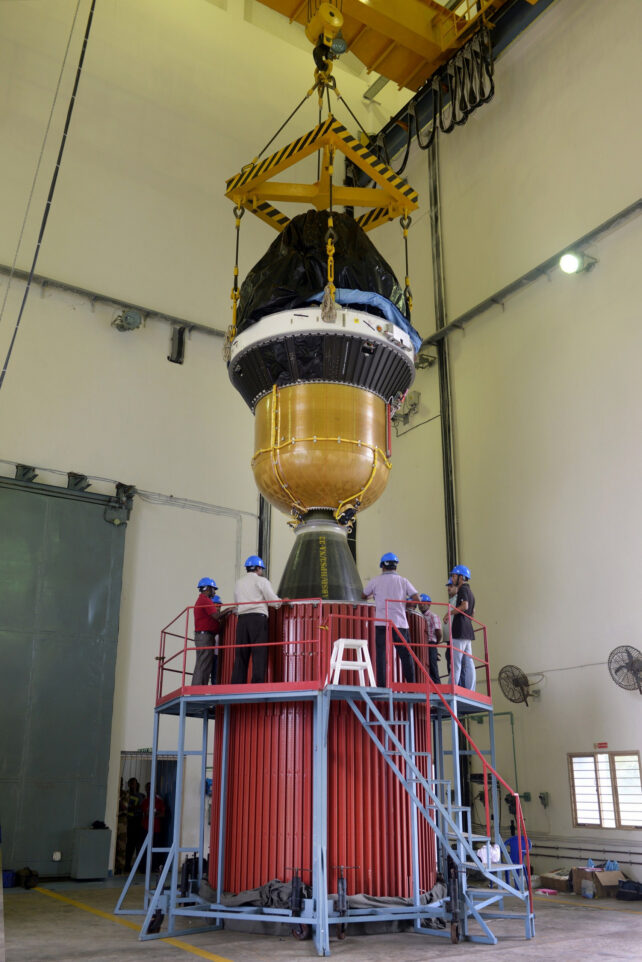
A massive metal object found drifting off the shore of a remote beach in Western Australia is awash in mystery as officials try to figure out where it came from.
Police have been guarding the mysterious thingamajig since it was discovered by baffled locals this last weekend about 250 kilometers (155 miles) north of Perth.
The object appears to be human-made, although it has clearly fallen into disrepair. About 2.5 meters (8.2 feet) wide and nearly 3 meters long, the cylinder’s sides are covered in barnacles, its base a mess of fragmented metal.
On the white sandy beaches of Green Head, it stands out like a sore thumb.
Police say chemistry analysis of the unidentified object has deemed it safe, though they are yet to confirm where it came from.
In spite of a futile attempt by Australian police to “urge everyone to refrain from drawing conclusions”, internet users began to speculate as to the object’s origins shortly after the news made headlines.
The leading online theory at this point is that the metal structure did not rise from the deep ocean but fell from space.
On Reddit, a user pointed out that the cylinder is a “perfect match” for the third stage motor case of India’s Polar Satellite Launch Vehicle (PSLV) rocket.
In fact, the Indian Defense Research Wing has already claimed the object as its own. In a recent statement, officials at the research wing said the PSLV rocket is an “essential workhorse in India’s space program”. When this rocket is launched, it is designed to lose its parts and fall back to Earth over remote ocean regions.
The third stage often plummets into the ocean near Australia.
The Australian Space Agency has not yet confirmed or denied this theory, although in a recent tweet they admitted the object “could be from a foreign space launch vehicle.”.
The parallels are pretty easy to see, even for the average layperson.
A photo of India’s PSLVs (seen below), which launched several satellites for Singapore in 2015, shows the copper-colored rocket motor, which “provides the upper stages high thrust after the atmospheric phase of the launch.”

The agency had another launch earlier this year, but judging by the barnacles on this newly beached metal object, it has probably been in the ocean for more than a few months.
The issue of space junk from rocket launches is one that is gaining greater attention in recent years, as more satellites are deployed into Earth’s orbit. The rocket parts are often purposefully sunk in remote regions of the ocean, without any plans for retrieval.
The Australian Space Agency said in a statement that they “are committed to the long-term sustainability of outer space activities, including debris mitigation, and continue to highlight this on the international stage.”